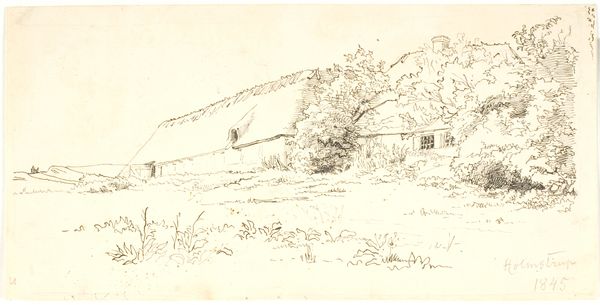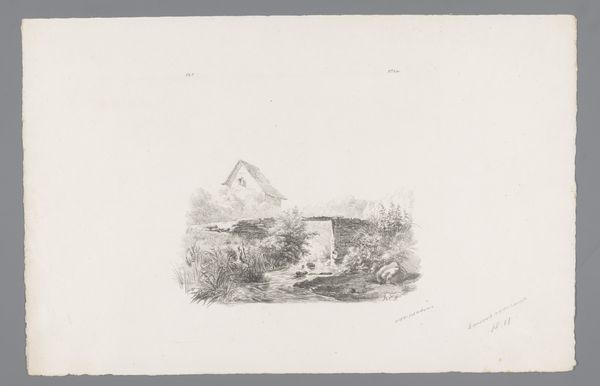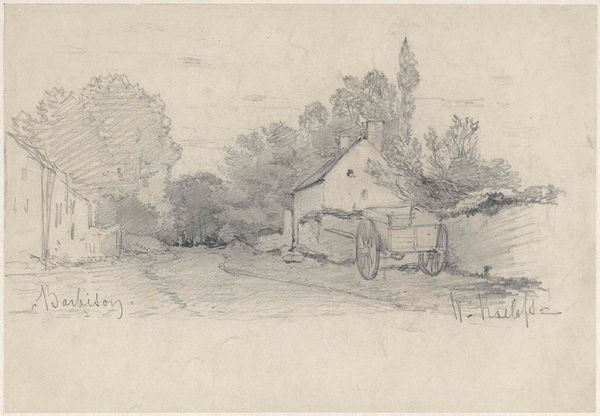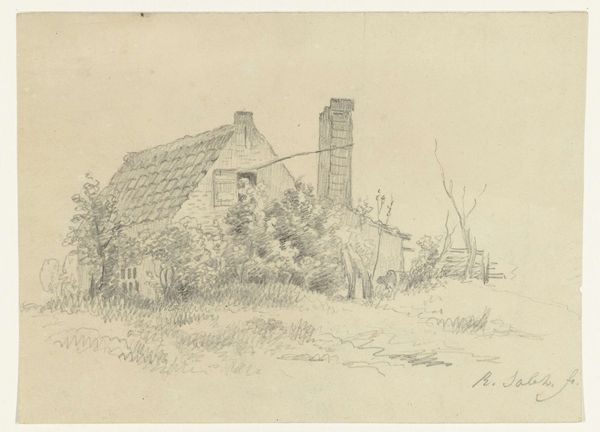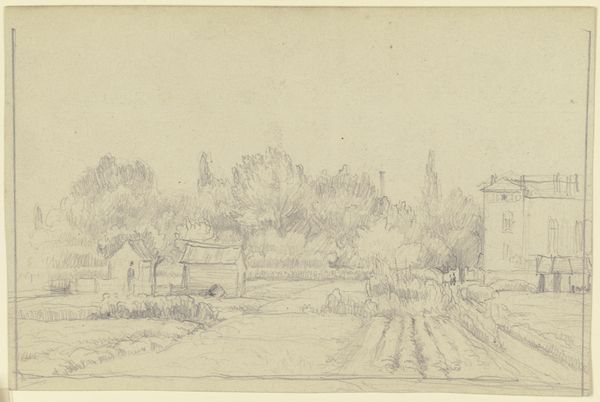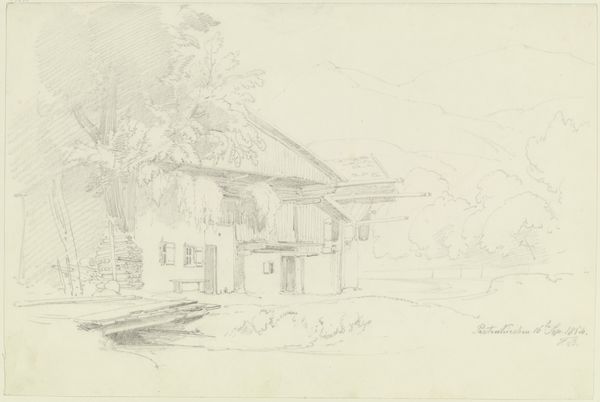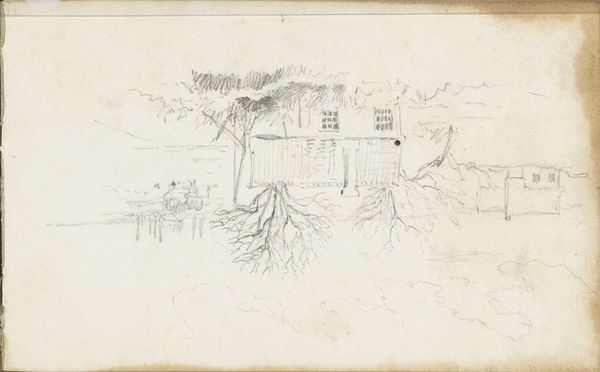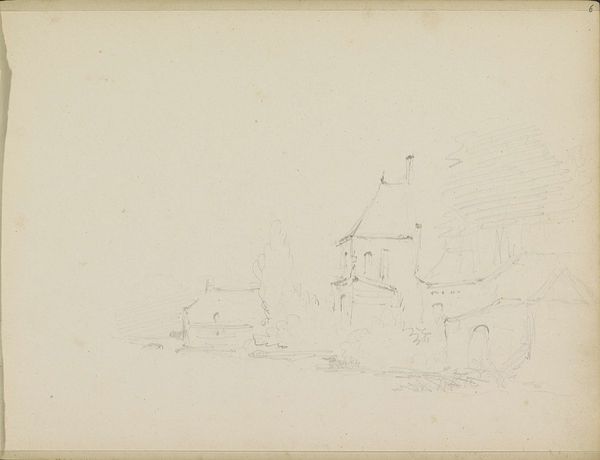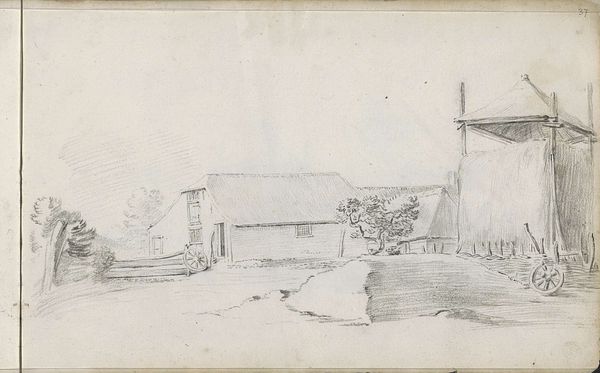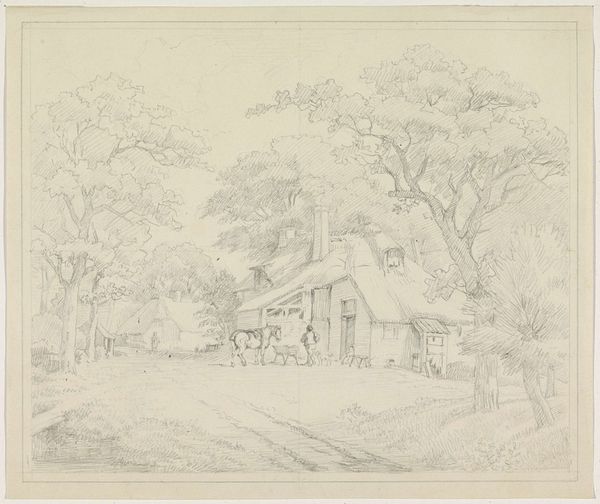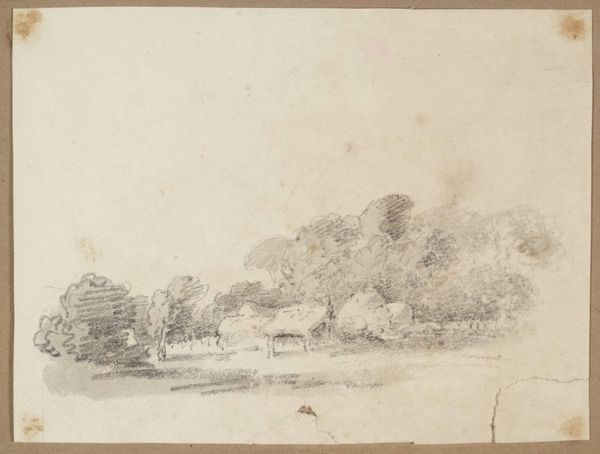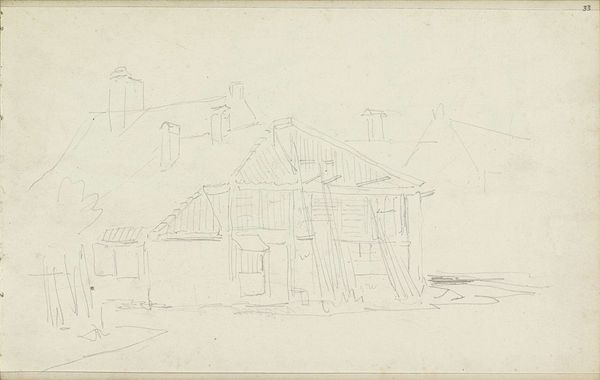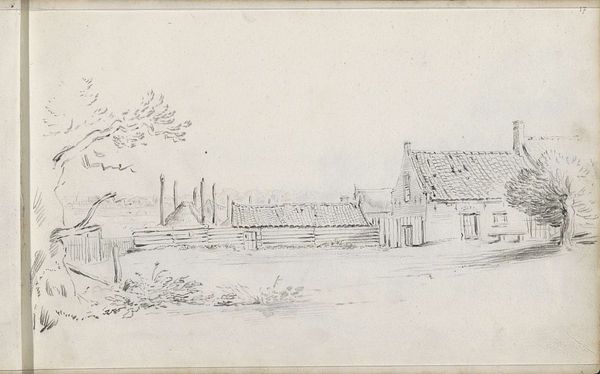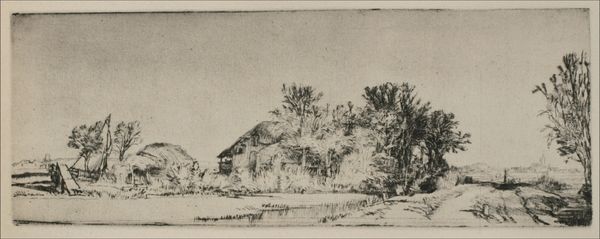
drawing, ink, pencil
#
drawing
#
landscape
#
etching
#
ink
#
pencil
#
genre-painting
#
realism
Dimensions: height 210 mm, width 275 mm
Copyright: Rijks Museum: Open Domain
Editor: This drawing, "Achtertuin van Malling Abbey" by Gerrit Postma, was created in 1858 using pencil, ink, and etching. The loose strokes give it a very calm, almost dreamlike quality. What do you see in this piece? Curator: This seemingly simple landscape actually resonates deeply with symbolic meaning when considered in the context of 19th-century social dynamics. Consider the walled garden. What feelings does enclosure evoke? Editor: Safety, perhaps? A sense of protection? Curator: Exactly. But from what? And at what cost? Historically, gardens, especially those attached to religious orders like Malling Abbey, represented a separation from the secular world, a dedicated space for reflection and spiritual growth. Editor: So the Abbey would have represented more than just a building. Curator: Indeed. The visual elements of chickens at the front serve not only to create pictorial interest, but a wider set of values of animal husbandry. The drawing is a vessel carrying specific cultural and psychological symbolism. Are we still building these ‘walled gardens’ today in different forms? Editor: That's fascinating. I hadn't considered how something that appears to be just a landscape drawing could be interpreted in so many ways. Now that I’m thinking about it, maybe we do create walled gardens with our digital devices as echo chambers, and maybe physical buildings, too, like gated communities. Curator: Precisely! Understanding the symbolism allows us to recognize historical continuities in how we perceive security and community, memory and meaning in everyday objects, or animals!
Comments
No comments
Be the first to comment and join the conversation on the ultimate creative platform.
